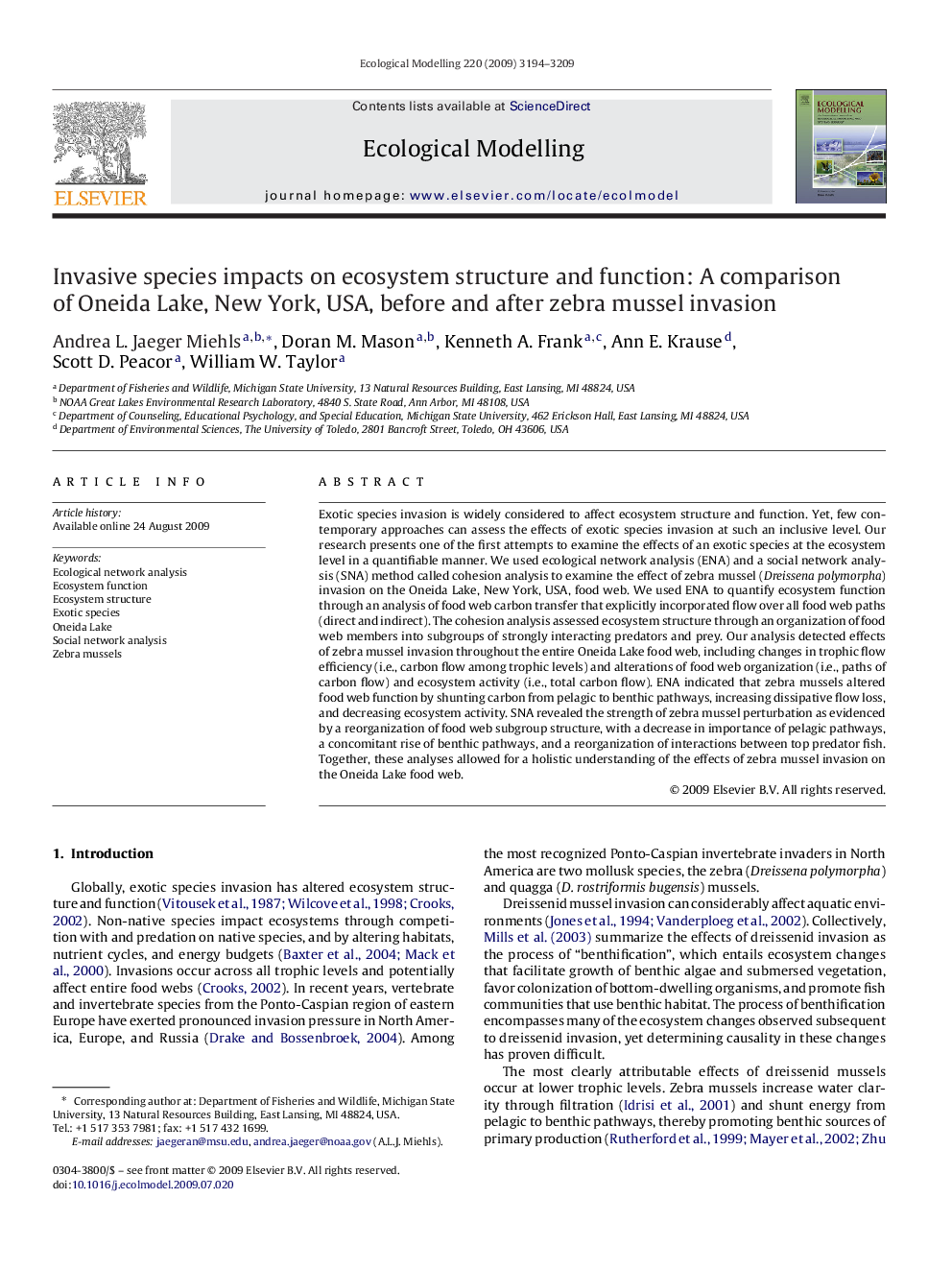| Article ID | Journal | Published Year | Pages | File Type |
|---|---|---|---|---|
| 4377534 | Ecological Modelling | 2009 | 16 Pages |
Exotic species invasion is widely considered to affect ecosystem structure and function. Yet, few contemporary approaches can assess the effects of exotic species invasion at such an inclusive level. Our research presents one of the first attempts to examine the effects of an exotic species at the ecosystem level in a quantifiable manner. We used ecological network analysis (ENA) and a social network analysis (SNA) method called cohesion analysis to examine the effect of zebra mussel (Dreissena polymorpha) invasion on the Oneida Lake, New York, USA, food web. We used ENA to quantify ecosystem function through an analysis of food web carbon transfer that explicitly incorporated flow over all food web paths (direct and indirect). The cohesion analysis assessed ecosystem structure through an organization of food web members into subgroups of strongly interacting predators and prey. Our analysis detected effects of zebra mussel invasion throughout the entire Oneida Lake food web, including changes in trophic flow efficiency (i.e., carbon flow among trophic levels) and alterations of food web organization (i.e., paths of carbon flow) and ecosystem activity (i.e., total carbon flow). ENA indicated that zebra mussels altered food web function by shunting carbon from pelagic to benthic pathways, increasing dissipative flow loss, and decreasing ecosystem activity. SNA revealed the strength of zebra mussel perturbation as evidenced by a reorganization of food web subgroup structure, with a decrease in importance of pelagic pathways, a concomitant rise of benthic pathways, and a reorganization of interactions between top predator fish. Together, these analyses allowed for a holistic understanding of the effects of zebra mussel invasion on the Oneida Lake food web.
